
Climbing Mt Kilimanjaro was one of the most incredible experiences of my life. It’s a real adventure that brings unforgettable highs and challenging lows.
I think that the best part about climbing Kilimanjaro – and what makes is so popular – is that it’s accessible to almost anyone.
With the right preparation, a strong dose of determination, and a fantastic support team around you, I can assure you that it’s very possible to reach the summit.
Taking on such a challenge does require a fair bit of planning and preparation. There is a lot to understand and know before you go – from costs and packing lists to the route you choose and the climb itself.
When I climbed Kilimanjaro, I found it difficult to find all the information I needed in one convenient place. That’s why I’ve put together this ultimate guide to climbing Mt Kilimanjaro.
Here I answer all the questions you may have about climbing the famous mountain. You’ll find everything you need to prepare yourself for the climb of your life. And believe me, it will be the climb of your life!
Kilimanjaro key facts
Before we dive head first into tips and tricks for climbing Kilimanjaro, I’m going to start with some key facts about the mountain.
Where is Kilimanjaro?
Mount Kilimanjaro is located in Northeastern Tanzania near the border with Kenya. It’s the highest mountain in Africa and is situated within Kilimanjaro National Park.
Kilimanjaro lies just 205 miles away from the equator – which is why so many people are surprised to find glaciers at the top.
How high is Kilimanjaro?
Kilimanjaro is an eye-watering 5,895 meters (19,340 feet) above sea level. That’s 3.7 miles high! It’s the highest free-standing mountain in the world, as it’s not part of a mountain range.
The towering mountain is one of the Seven Summits, being the fourth highest – after Everest, Aconcagua, and Denali.
Is Kilimanjaro a volcano?
Yes, Kilimanjaro is a dormant volcano with three volcanic cones: Kibo (5,895m), Mawenzi (5,149) and Shira (3,962).
The last major eruption was 360,000 years ago and the most recent activity was 200,000 years ago. So it’s been quite some time since any volcanic fireworks.
The Shira and Mawenzi volcanic cones are now extinct. In fact, Shira is no longer a peak, as it collapsed and is now known as Shira Plateau.
Kibo is dormant, which means it could technically erupt again. But scientists have not seen any signs of volcanic activity, so I can assure you that it’s certainly not something to worry about.
Is Kilimanjaro in the Serengeti?
No, Kilimanjaro is located in Kilimanjaro National Park. The Serengeti National Park is over 320km west of Kilimanjaro.
You also can’t see Kilimanjaro from the ground in the Serengeti – despite what the lyrics in Toto’s Africa may have you believe!
The Kilimanjaro glaciers
People are often surprised that glaciers exist on top of Kilimanjaro, due its proximity to the equator. They have managed to survive because the bright white of the ice reflects most of the heat.
However, the glaciers have been gradually disappearing over recent years and this decline shows no signs of stopping.

The deep black of the surrounding lava rock absorbs heat from the sun, which contributes towards the ice melting.
With the increase in global warming, the glaciers are becoming increasingly unstable. Sadly, scientists have estimated that Kilimanjaro’s glaciers will likely be gone in the next 10-15 years.
So there’s your motivation to climb Kilimanjaro sooner rather than later! Believe me, you don’t want to miss these beautiful ice structures.
When was Kilimanjaro first climbed?
Kilimanjaro was first successfully climbed in 1889 by German geologist Hans Meyer, Austrian climber Ludwig Purtscheller, and local guide Yohani Kinyala Lauwo.
The team included a guide, two local tribe leaders, nine porters, and a cook. The route they took most closely resembles the current day Marangu route.
How many people climb Kilimanjaro every year?
Around 30,000-40,000 people attempt to climb Kilimanjaro every year. It has a lower success rate than people expect for a mountain that requires no technical expertise.
For a long time, the success rate was lower than 50% but nowadays it is believed to be around 65%. The longer your route, the higher your success rate – more on this later in the guide.

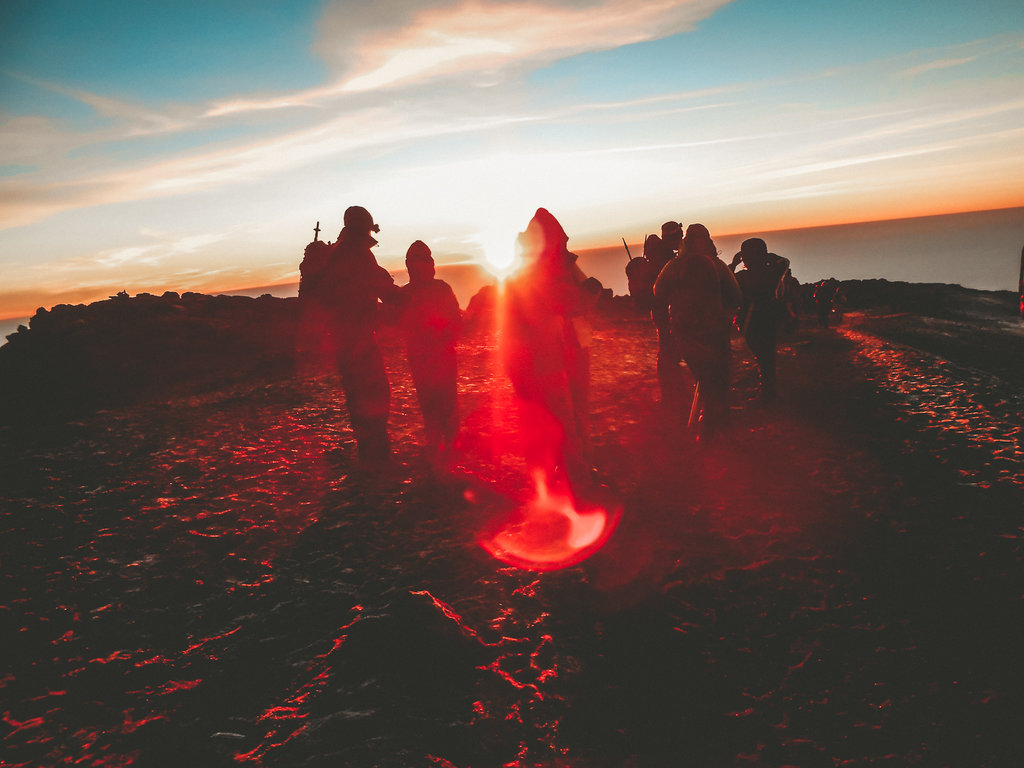
Altitude sickness is the most common cause of a failed summit.
Success rates are also likely quite low due to the accessibility of Kilimanjaro – almost anyone can climb it as there is no technical or fitness criteria.
Why climb Mount Kilimanjaro?
There are lots of compelling reasons to climb the highest mountain in Africa. These are my favourite reasons:
It’s an accessible adventure. You don’t need extensive training and it’s suitable for first-time hikers, as well as more experienced mountaineers.
Porters do all the heavy-lifting. Great appeal lies in the fact that porters carry your big rucksack (you carry your daysack), tents, equipment, and food.
Easy to reach. Despite its remote location, Kilimanjaro is relatively straightforward to access, with a good surrounding infrastructure.
Supports the local economy. From guides, porters, and cooks who join you on the mountain, to hospitality, tour agencies, and many other companies within the area.
Great personal achievement. Climbing Kilimanjaro is undoubtedly an extraordinary personal achievement. It’s a chance to challenge yourself, and get away from the world for a few days.
Breathtaking natural beauty. The mountain is a truly spectacular sight and the view from the top is the best you’ll ever see. Watching the sun rise over the Roof of Africa will forever be one of my fondest memories.
How to get to Mount Kilimanjaro
There are a few different options for travelling to the mountain. The nearest airport to Kilimanjaro is the Kilimanjaro International Airport (JRO), and it is located between Arusha and Moshi.
Most people stay in Moshi before climbing Kilimanjaro (which is what I did), as it is the closest municipality being a 45 minute drive from Kilimanjaro Airport.
Unfortunately, you cannot fly directly from the UK or US to Kilimanjaro Airport. But you can fly from any of the main airports in the area – Dar es Salaam, Zanzibar, or Nairobi in Kenya.
Bear in mind that you will need an extra visa if you go via Kenya. Alternatively, you can travel by road from Nairobi to Arusha or Moshi via shuttle bus or private transfer.
This is actually how I travelled – we were a group of 10 and we flew into Nairobi. We then stayed one night in Nairobi before driving to Moshi in a private minibus.
It’s a 208km drive and takes around eight hours.
What to know before climbing Kilimanjaro
From timings and weather to training and safety, here I answer all your questions about how to prepare to climb Kilimanjaro.
How long does it take to climb Kilimanjaro?
How long it takes to climb Kilimanjaro varies from five to nine days, depending on the route you take. The minimum length of time is five days but this also has the lowest success rate.


Seven days is recommended for the best acclimatisation. But if you want to really increase your chances of summiting then nine days is the longest time you can take to climb the mountain.
How much does it cost to climb Kilimanjaro?
Costs to climb Kilimanjaro vary quite considerably depending on season, route, and the tour company you book with.
You can also choose between group climbs or private climbs according to your budget. Generally the costs range between £1,200 to £3,500 (or around $1,500 to $5,000).
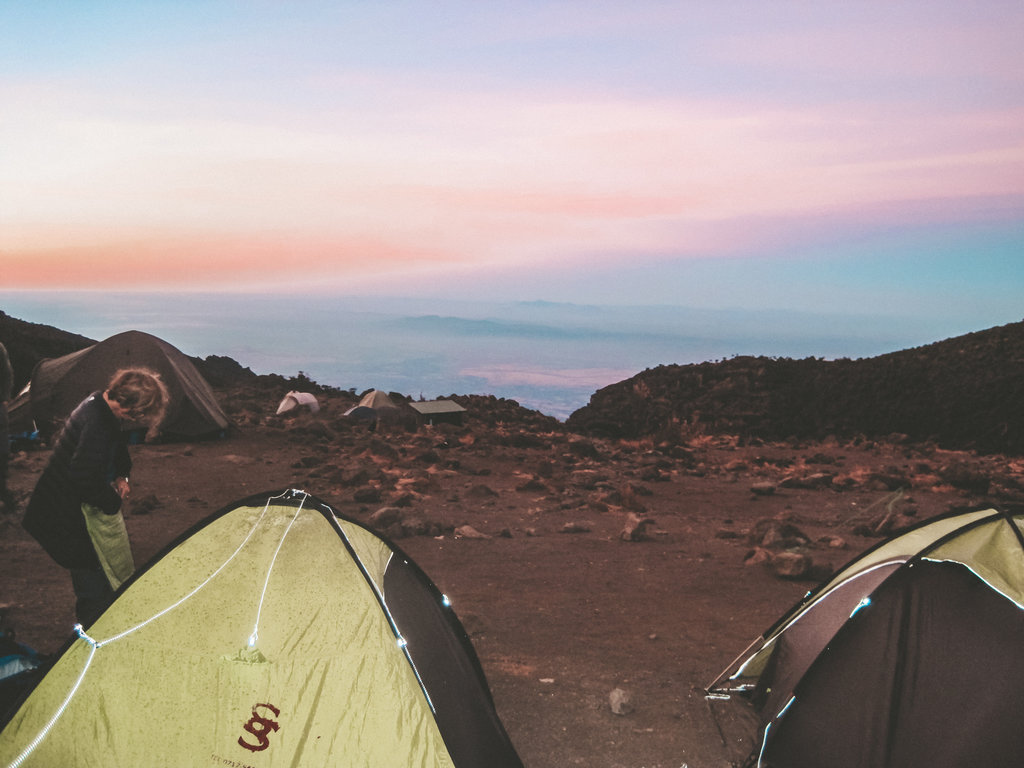
There’s no such thing as a luxury Kilimanjaro climb but there are a couple of nuanced differences between tours.
For example, some tours come with a portable private toilet. It’s essentially a chemical toilet within a tent, allowing you total privacy. More on the toilet situation later in this guide (bet you can’t wait!).
Back to costs, don’t forget the other expenses involved in a trip to Kilimanjaro.
These include but are not exclusive to flights, transfers, accommodation (for before and after your climb), clothing / equipment, tips, visas, and vaccinations.
Climb Kilimanjaro for charity
Another popular option is to climb Kilimanjaro for charity. This way you can raise money for a great cause while undertaking the adventure of a lifetime.
Just be careful with getting donations to cover your personal costs though; people won’t always take kindly to paying for you to go on holiday.
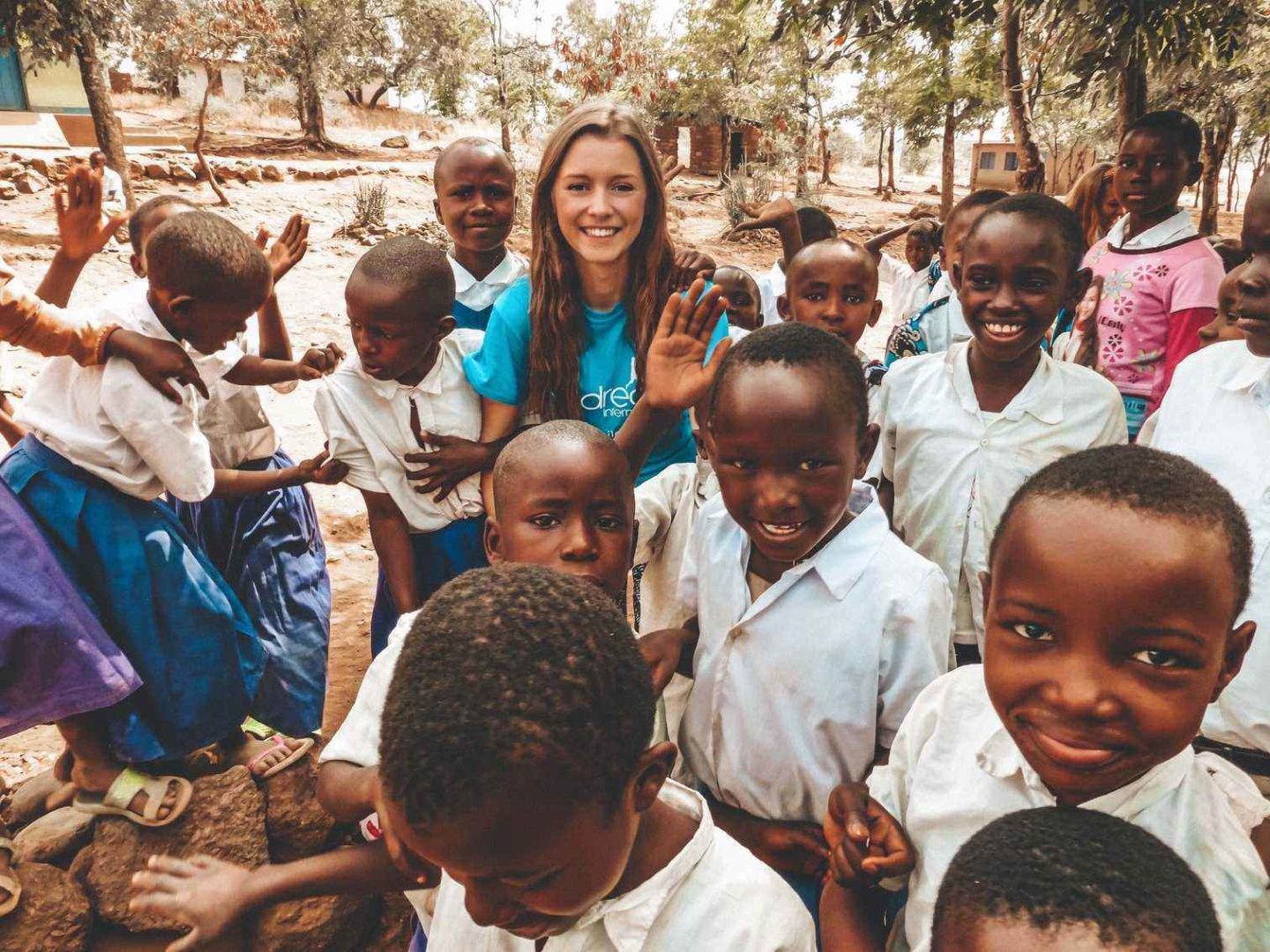
If you’re wondering how to climb Mount Kilimanjaro for charity, start by doing some research into charities and choose one that resonates with you.
It’s nice to support charities which operate in Tanzania, such as helping to support local communities or building schools.
Kilimanjaro weather and temperature
Kilimanjaro weather varies hugely from bottom to top. You’ll start the climb in a tropical climate through the rainforest. The climb gets increasingly colder and drier as you ascend.
By the time you reach the summit, you’ll be in Arctic conditions. I think climbing Kilimanjaro essentially feels like walking from the Sahara desert to Antarctica in less than a week!
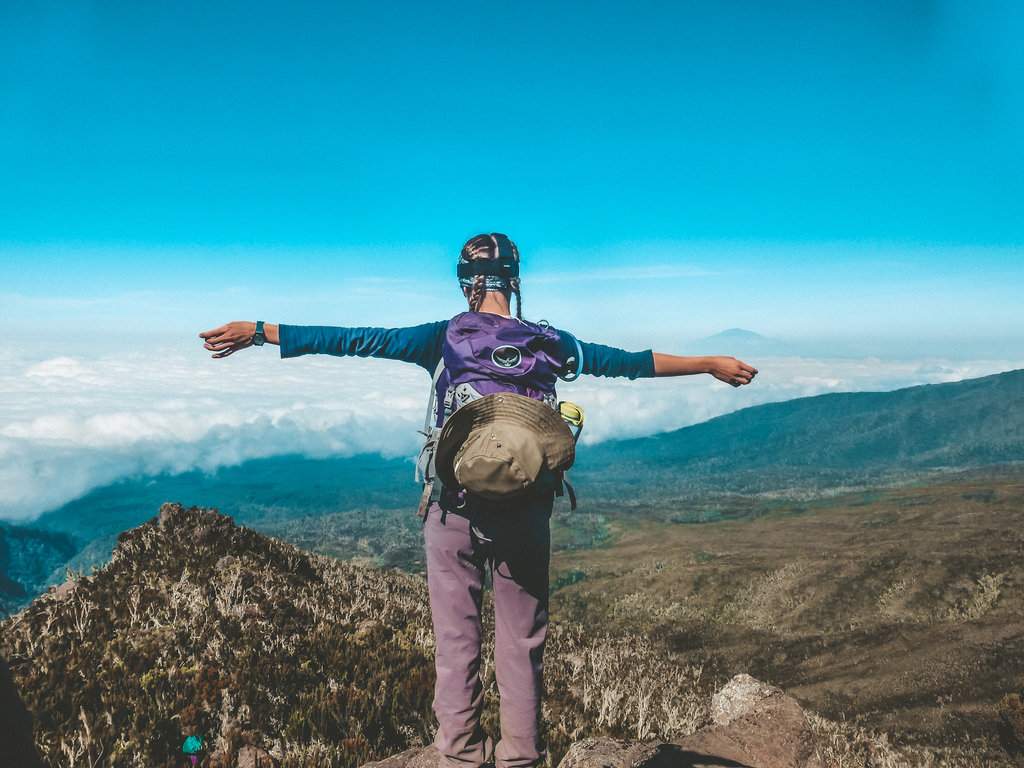
These extreme weather and temperature changes are due to the fact that climbers encounter five different climate zones and ecological zones throughout the climb:
- Bushland
- Rainforest
- Moorland
- Alpine Desert
- Arctic
Temperatures on the ground in Moshi tend to average between 20-26 degrees Celsius.
While nighttime temperatures at Uhuru Peak (you summit during the night) in the Arctic Zone range from -5 to -30 degrees Celsius. Yep, it’s freezing!
When is the best time to climb Kilimanjaro?
You can climb Kilimanjaro year-round but it’s best to avoid the wet and cold months. Personally, I climbed Kilimanjaro in September.
January, February, August, and September are the best months to climb Kilimanjaro, as these are the driest months of the year.
A wider window is fine too, so anything from January to mid-March and June to October. April, May and November are the wettest months, so they are best avoided.
Is Kilimanjaro hard to climb?
Kilimanjaro is generally considered to be the easiest of the Seven Summits, as it requires no technical skills or equipment. It is simply a hike with a little bit of gentle scrambling in some places.


However, the challenge comes with the high altitude – particularly the arctic zone at the top which is classed as an ‘extreme’ altitude zone.
The possibility of getting severe altitude sickness is by far the most dangerous part of climbing Kilimanjaro.
Although you can undertake altitude training to reduce your chances of sickness, whether or not you suffer from altitude sickness is usually just down to luck.
Do you need to train for Kilimanjaro?
In short, you can climb Kilimanjaro without training, but you’ll need to have a reasonable level of fitness and be comfortable walking uphill for 7-8 hours a day.
So whether you need to train ultimately depends on your existing level of fitness. I’d say that training will certainly make the climb easier though.
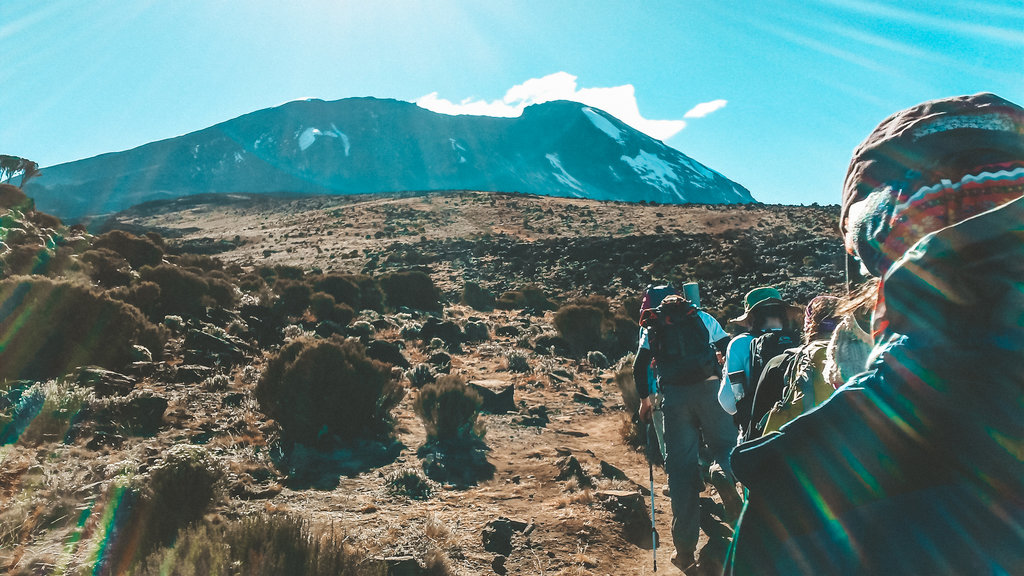
The best training you can do is to go out hiking, preferably up and down some hills. You should also aim to increase your general stamina and aerobic fitness.
This is important because of the lower levels of oxygen at the higher altitudes. But do also bear in mind that your level of fitness is not likely to affect your chances of getting altitude sickness.
Even the fittest, healthiest people in the world can suffer from bad altitude sickness.
Top tip: If you haven’t already got worn-in hiking boots then make sure you go out trekking in your boots.
Don’t wait until the big climb to wear them for the first time. I didn’t really do any training for the climb, but you could find me marching up and down hills in my local park to break in my boots!
Can anyone climb Kilimanjaro?
Of course not anyone can climb Kilimanjaro. But a lot of people can. Kilimanjaro is a very accessible climb not requiring any technical expertise, which is part of its wide appeal.
It’s not particularly suitable for young children or the elderly. Although having said that, the youngest person to summit was six years old and the oldest was 89 years old!

The main reason you may not be able to climb Kilimanjaro is due to an underlying health condition. For example, if you suffer from asthma then it’s likely that you will struggle with the lack of oxygen.
It shouldn’t deter you from climbing but just make sure you speak to your doctor first.
You also need a reasonable level of fitness. You don’t have to be an elite athlete but good health and fitness certainly helps.
How safe is it to climb Kilimanjaro?
There is an inherent risk with climbing any mountain, especially one that involves extreme altitude.
Humans are not meant to exist in those conditions, so there is considerable risk at putting your body through it.
The biggest danger of climbing Kilimanjaro lies in the risk of serious altitude sickness. Around 1,000 people are evacuated from Kilimanjaro every year, and there are around 10 deaths.
These numbers are low considering how many people attempt the climb each year, so I wouldn’t let this put you off.
But it’s important to be aware of the dangers, so you know not to push yourself too far.
Top tip: I’d highly recommend looking into taking Diamox (acetazolamide). It is commonly known as a good preventative treatment for altitude sickness. Speak to your doctor to see if it’s an option for you.
Do you need a guide for Kilimanjaro?
Yes, you can only climb Kilimanjaro with a licensed guide. It’s not a climb you can do on your own.
With a guide, you can also benefit from a support team of porters and chefs. These amazing humans make the entire experience a lot more manageable and enjoyable.
Anything else I need to prepare beforehand?
Not specific to climbing Kilimanjaro, but don’t forget to check which vaccinations you need for your travels.
You are likely to require a Yellow Fever certificate to be able to travel. Check with your doctor on exactly which jabs you need. I’d recommend doing this at least six months before you travel.


Top tip: With anti-malaria tablets, I strongly recommend opting for the slightly more expensive option. The cheaper ones very often cause sickness and vomiting – not something you want to contend with on your travels.
Make sure you look into what visas you need. It’s best to check with your country’s Tanzanian embassy. Again, be sure to do this well in advance of your trip.
Kilimanjaro routes
There are eight recognised routes for climbing Kilimanjaro: Lemosho, Machame, Marangu, Northern Circuit, Shira, Rongai, Umbwe, and Western Breach.
Choosing which route to take is an important decision, so it’s key that you understand the pros and cons of each option.
Machame route
Days: 6-7
Difficulty: High
Scenery: Excellent
Traffic: High

Machame route is the most popular Kilimanjaro route. It approaches from the South via the rainforest, then passes through Barafu base camp and Stella Point onto the summit.
It is a beautifully scenic route and offers reasonably good acclimatisation for trekkers. This is due to the high climb up to Lava Tower at 4,600m, followed by a night sleeping at a lower altitude of 3,900m.
It is a tricker route as it involves long days, steep walks, and a little scrambling. But I think it is arguably more fun because of this.
The Machame route is the trail I took when I climbed Kilimanjaro and I’d definitely recommend it.
Marangu route
Days: 5-6
Difficulty: Medium
Scenery: Good
Traffic: High
Marangu is the second most popular route but also the one with the lowest success rate.
This is despite it being one of the easier routes and likely due to the poor acclimatisation and the fact that it is a popular choice for inexperienced trekkers.
It is also the least scenic route and is very crowded due to both the ascent and descent being on the same paths.
Lemosho
Days: 6-8
Difficulty: High
Scenery: Excellent
Traffic: Medium

One of the newer Kilimanjaro routes, Lemosho begins in the west and eventually joins the Machame route through the Southern circuit.
Before it joins the Machame route, Lemosho is a relatively quiet route and benefits from breathtaking vistas and scenery. It has a high success rate for summiting.
Shira
Days: 6-7
Difficulty: High
Scenery: Excellent
Traffic: Medium
Shira route also approaches from the west, and it is very similar to the Lemosho route. The main difference being that Shira take trekkers by vehicle to Shira Gate, which means acclimatisation isn’t as thorough.
It therefore has a lower success rate and is not generally recommended when Lemosho offers a far better option.
Rongai
Days: 6-7
Difficulty: Medium
Scenery: Very good
Traffic: Low
Rongai is the only route that approaches from the north, near the Kenyan border. It is a good alternative for those looking for a quieter route that’s less crowded.
Although the scenery may not be quite as beautiful, trekkers benefit from a fantastic wilderness experience in the early stages of the climb.
There’s the opportunity to spot all manner of wildlife, from buffalo to elephants.
Northern Circuit
Days: 9
Difficulty: High
Scenery: Excellent
Traffic: Very low

The newest and longest route, the Northern Circuit starts alongside the Lemosho trail at the start. It then traverses the mountain around the northern slopes, which are extremely quiet.
Due to the length of the route, it provides excellent acclimatisation. This is reflected in the high success rate – the best of all routes.
Umbwe
Days: 6-7
Difficulty: Very high
Scenery: Very good
Traffic: Very low
The Umbwe route is characterised by a short and steep ascent, which does not provide the required stages of acclimatisation.
It is therefore a very difficult route and not one that is recommended. Umbwe is generally only used by very experienced hikers who are already acclimatised.
Western Breach
Days: 6
Difficulty: Very High
Scenery: Very good
Traffic: Low
The most difficult route and one that is not really used by any tour operators. It is steep and not particularly safe, plus it offers poor acclimatisation.
It was actually closed back in 2006 following a rock-fall that tragically killed three trekkers.
It has since improved its safety credentials, but it is only advisable for experienced hikers. Helmets and crampons are required.
Which is the best Kilimanjaro route to climb?
The route you choose will depend on your priorities and time constraints. Generally speaking, the best Kilimanjaro routes are Lemosho, Machame, Rongai, and Northern Circuit.
These all provide good acclimatisation opportunities, and benefit from beautiful scenery. Aside from the Machame route, they are also less crowded routes.

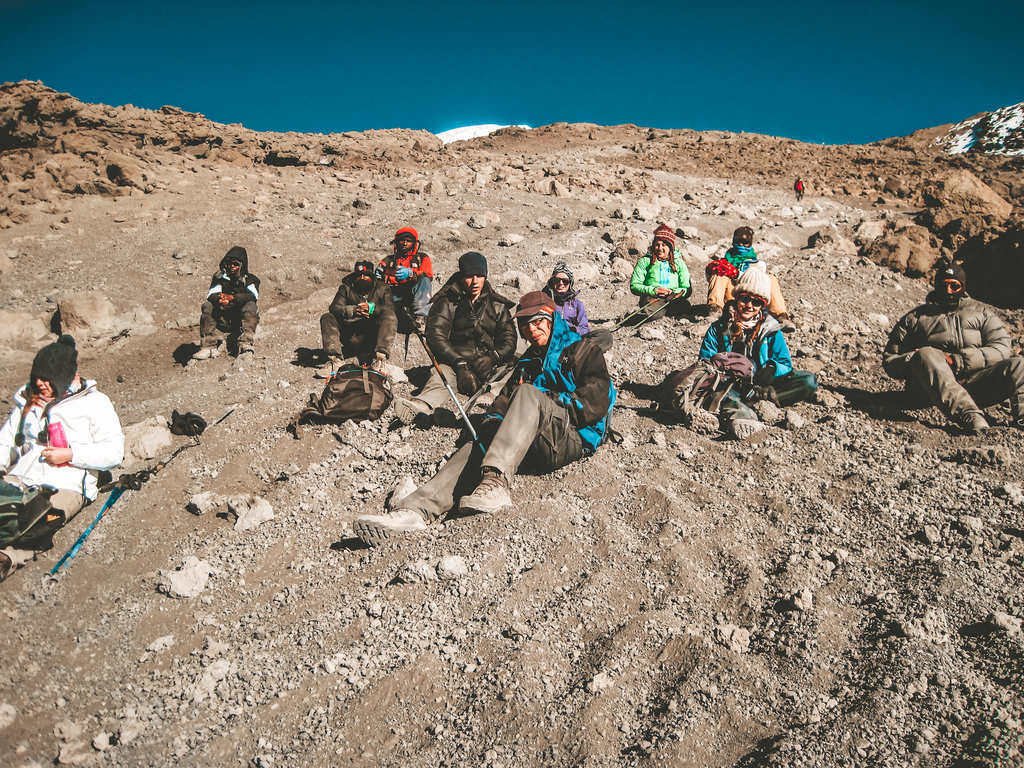
Umbwe and Western Breach should definitely be avoided. This should be easily done, as there won’t be any tour companies offering these routes.
Shira and Marangu are doable but their lack of acclimatisation stages makes them less preferable options, especially with their lower success rates.
In case you’re interested, the route that the Comic Relief team of celebrities climbed was the Northern Circuit. Likely because it is the quietest, and also offers the highest success rate.
On the mountain
Are there toilets on Kilimanjaro?
Yes, there are public toilets available to use at every camp. However, a word of warning: to say they are unpleasant is somewhat of an understatement.
The toilets are simply a shack with a hole in the ground. The smell is overwhelming and I have to say that the entire experience is generally quite unpleasant.
As mentioned earlier, some tour companies bring a portable private toilet with them. This allows for a little more privacy and hygiene – but does of course come with a cost.
Personally, I avoided the mountain toilets whenever I could. Instead, I chose to go in the great outdoors – as do a lot of other people!
There are some camps, such as at Barafu Camp, where you need to use the provided toilets because it’s not safe to go off wandering to find a quiet spot to have a wee.
When this is the case, I’d advise attaching a baby wipe (or five) to your face. This is a minimum requirement unless you are excellent at holding your breath!


Top tip: One for the ladies. Although this didn’t happen to me, many women have told me that spontaneous periods are an unfortunate side effect of high altitude.
I’d therefore highly recommend coming period-prepared and expecting the worst. Even if you’re on birth control, the power of the altitude can still overrule.
What is the food like on the mountain?
The food will depend on your tour company, but generally I’d say the food is better than you’d expect for a mountain climbing experience.
Days started with porridge, while lunch and dinner consisted of lots of veg, rice and potatoes. All the carbs!
But completely necessary for all the hiking you will be doing. Popcorn is also provided as a daily snack, along with tea.

Top tip: A common symptom of being in high altitude is loss of appetite. Even if you don’t feel like eating, it’s so important that you do.
The same goes for water. You have to use water purification tablets and it makes the water taste a bit like chlorine. It makes it difficult to drink but it’s essential that you stay hydrated.
Summiting Kilimanjaro – what happens on summit day?
It is very common to attempt the summit during the night, as you can reach the top in time for the sunrise. You will be woken up at approximately 11pm for ‘breakfast’.
After putting on every piece of clothing you have with you, it’s time to start the ascent. With nothing but your head torch to light the way, you’ll walk ‘pole pole’ – very slowly.
Due to the high altitude, oxygen is limited and it’s important to stay at a slow and steady pace.

The summit takes around 6-8 hours to complete. Once you get to the top, you’ll witness the stunning glaciers and the vast crater.
Trundle along to Uhuru Peak where you can snap a few photos. Although be warned that there is such a thing as rush hour at Uhuru Peak!
I couldn’t even manage a picture of just me at the summit, because there were too many people.
Top tip: Keep your cameras warm on summit night. The freezing cold air will kill the battery of your camera or phone.
So if you want to be able to snap some pictures when you get to the top, be sure to keep your devices warm.
Pack them deep within your backpack, or pop a hand warmer next to them. I’d also recommend taking at least two memory cards.


You won’t spend too long at the top because of the extreme altitude. Once the pictures are done, you’ll start the descent, which is over far more quickly than the ascent.
Top tip: The temperatures will be freezing. So make sure you pack really good thermals, including gloves and socks.
You’ll also find that the cold will freeze your water, so it’s best to keep a bottle buried within your rucksack so it doesn’t freeze as easily.
Make sure you force some breakfast down before summiting, as your snacks are likely to freeze too! I have memories of me licking an energy bar like an ice cream!
What is the hardest part of climbing Kilimanjaro?
The hardest part of climbing Kilimanjaro is summit night. Combine freezing cold temperatures with a strong chance of altitude sickness, and it’s generally quite an unpleasant experience.
I think it’s important not to sugarcoat – the summit is tough. But it is also the most rewarding part. Nothing will beat watching the sunrise over Africa from the top of Kilimanjaro.
Tipping porters and guides
Climbing Kilimanjaro would simply not be possible without the guides and porters. The job they do is incredible.
You see porters power walking up the mountain with heaps of baggage on them – a giant rucksack on their back, cooking equipment on their head, and a chair balanced on top.
It’s only fair that you give them a generous tip at the end of your climb. Not only do they do all the heavy lifting, they are also there to keep your spirits high.
You’ll be entertained by endless singing and dancing, and they will always bring a smile to your face after a long day.


Some tour operators advise that you give your tips at the final meal on the mountain.
While others are done at the end of your hike, once you’ve signed out with the authorities. The below amounts provide a good guideline:
- Per main guide: £15-£18 per day ($20-$35 per day)
- Per assistant guide: £12-£15 per day ($15-$20 per day)
- Per cook: £10-£12 per day ($12-$15 per day)
- Per porter: £5-£8 per day ($7-$10 per day)
But of course if you’re feeling more generous, then you can be sure that anything higher will be greatly appreciated.
Gear, equipment & clothes
Kilimanjaro packing list
Clothing
- Top and bottom base layers
- 2-3 t-shirts or trekking tops
- 5-6 pieces of underwear
- Sports bra (for the ladies)
- Walking trousers (quick dry material)
- Shorts (for the rainforest)
- 1-2 fleeces or jumpers
- Down jacket
- Waterproof / windproof jacket
- Good quality gloves (mittens better for summit night)
- Inner gloves
- 4-5 trekking socks
- Thermal socks (for summit night)
Footwear
- Good quality hiking boots
- Spare laces and footbed
- Lightweight footwear for camp (trainers or sandals)
Headgear
- Wooly hat
- Sun hat (preferably with a brim to protect your neck)
- Buff or scarf (essential for summit night)
- Sunglasses
- Headphones (for the trek or to block out any snoring!)
Top tip: I’d recommend bringing a good breathable buff for summit night. The bitter wind took the skin of my face from the tip of my nose to my chin.
Although I had a buff, it wasn’t breathable and I couldn’t get enough oxygen in when it was over my mouth!
Personal hygiene
- Toothbrush
- Small toothpaste
- Wet wipes (these will be your only shower option)
- Hand sanitiser
- Ear plugs
- Face flannel
- Small towel
- Suncream
- Lip balm with SPF
- Deodorant
- Moisturiser
- Imodium
- Rehydration sachets
- Paracetamol
- Other personal medicines
- Mosquito repellant
- Toilet roll
- Tissues
- Sanitary products for women
Top tip: For anyone with long hair, I’d advise getting someone to braid your hair into French plaits before the climb.
That way you don’t have to worry about unsightly greasy hair, or tangled and messy hair from the wind. You can just forget about it.
Equipment
- Daypack – up to 15kg
- Large rucksack (the porters will carry this)
- Four season sleeping bag (you can usually hire these)
- Water bladder (convenient for drinking while walking)
- Water bottle (disposable plastic bottles are not allowed on Kilimanjaro)
- Trekking poles (you can usually rent these)
- Hand warmers
- Optional: Crampons (check with your tour provider if you need these, as it will depend on your route and the time of year you’ll be climbing)
Phew, that was a long one! I hope this guide to climbing Kilimanjaro has been helpful – if so, please do share it and recommend to friends!



Awesome post! This is helpful post. This article is clear and with lots of useful information. Thanks for the run down!